Every Root Cause of Back Pain Explained
If you want to fix your back pain it's important to understand the root causes.
As a physical therapist that specializes in low back pain & sciatica, this page outlines the 5-Factor Framework I use to evaluate and diagnose the root cause of my patients' back symptoms.
Below is a video that explains everything in-depth, and what follows is a brief summary of each slide with video timestamps.
At the bottom of the page is a bonus section that outlines the #1 specific issue I see within each of the 5 factors along with how you can fix it.
Get Notified About Future Resources Like This
DM me the word "info" on Instagram and I'll DM you all the resources I make like this in the future.
My goal is to produce 1 in-depth resource per month.
Summary of Slides

Slide 1
- My estimate is that only 10% of the interventions that are used to fix back pain are relevant for any one specific individual
- That's why if you randomly try interventions you find online, most won't work
- Understanding the root causes of back pain is the first step in identifying which of the 10% of interventions are likely to help you
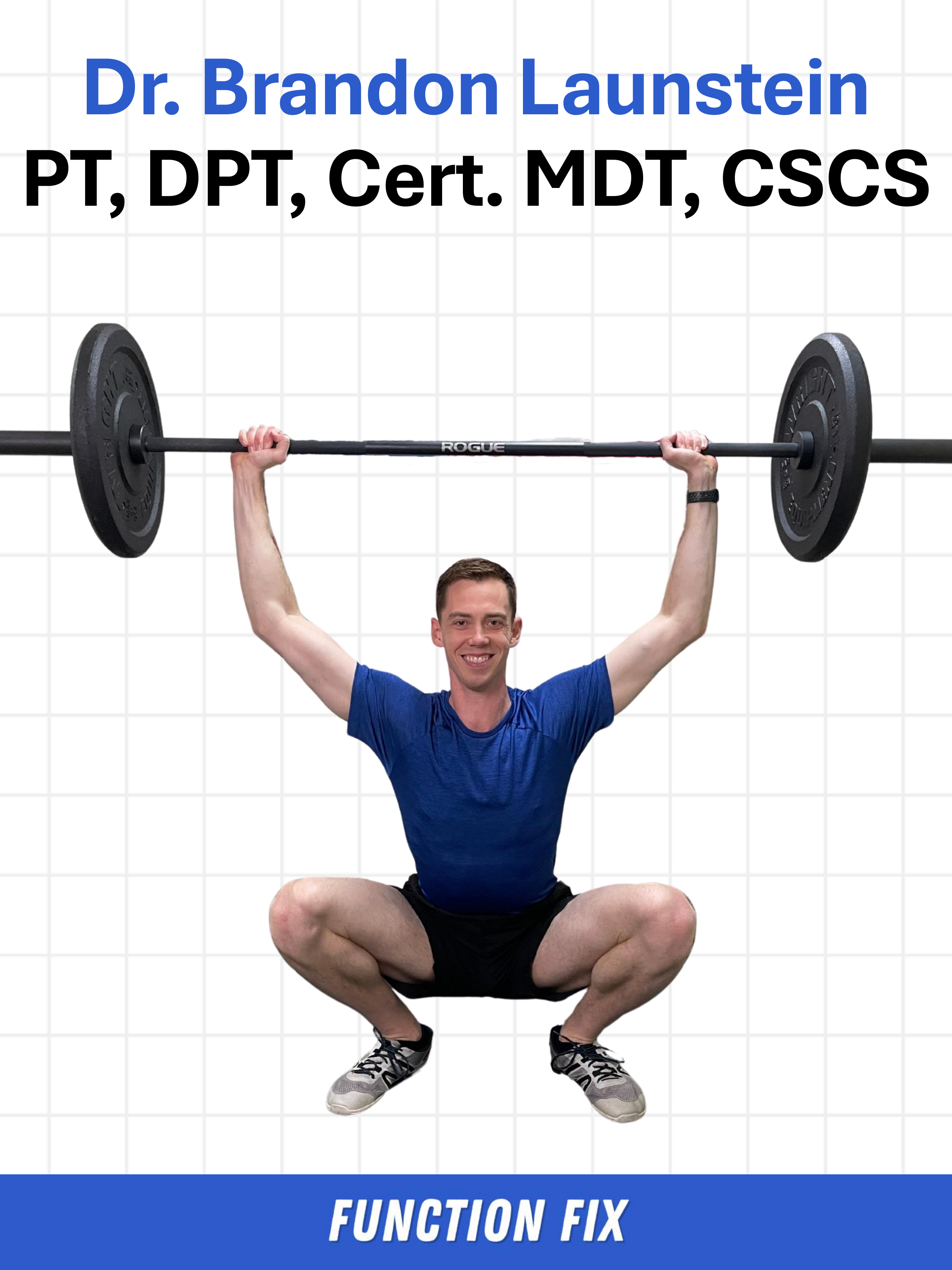
Slide 2
- About me: U.S. Army Physical Therapist & Certified Strength Coach specializing in fixing & preventing pain in hybrid athletes

Slide 3
- Currently, if you Google the root cause of back pain, you'll see causes like these being talked about online
- Even as a doctor of physical therapy, this list is overwhelming

Slide 4
- The 5-Factor Framework is a result of two experiences in my life
- First, before I was a PT I had severe back pain and was frustrated by the lack of help I was getting from medical providers and the generic & fragmented information that was available online
- As a new grad PT I was only fixing the back pain of approximately 50% of my patients - wanting better outcomes, I spent considerable time learning how to better fix back pain and coming up with my own comprehensive framework to follow

Slide 5
- Now, by using this 5-Factor Framework, 95% of my back pain patients experience a significant reduction in their pain & improvement in function
- I say that so you know this framework is being battle tested every day with a wide variety of people - this isn't theory or a framework that worked only for me, it's the framework that's effective with all of my patients
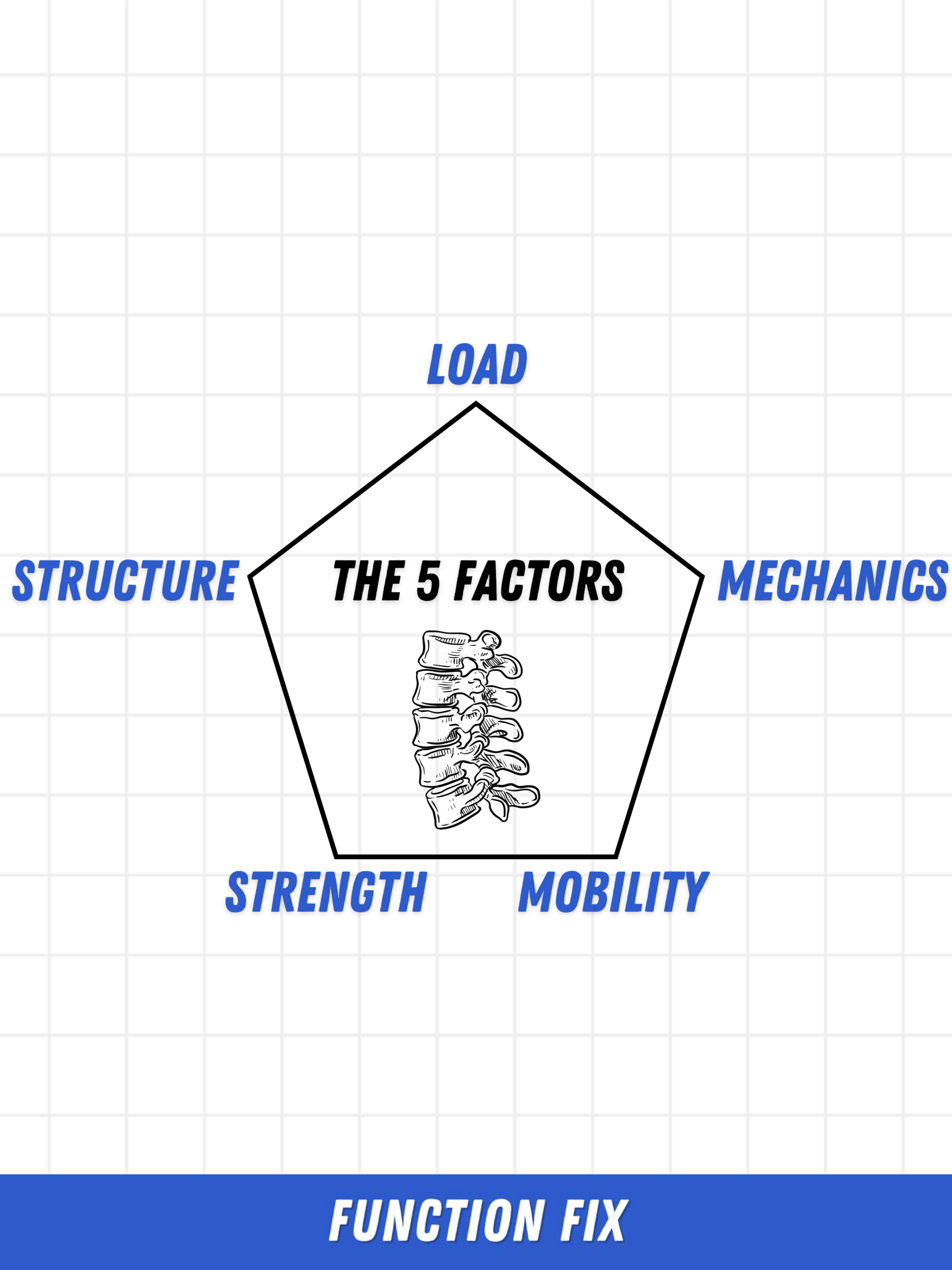
Slide 6
- Here's the 5 factors that cause all back pain: Load, mechanics, mobility, strength, and structure

Slide 7
- I'd recommend taking a screenshot of any slides with this gold icon and possibly even taking notes as you go - this is an information dense video!
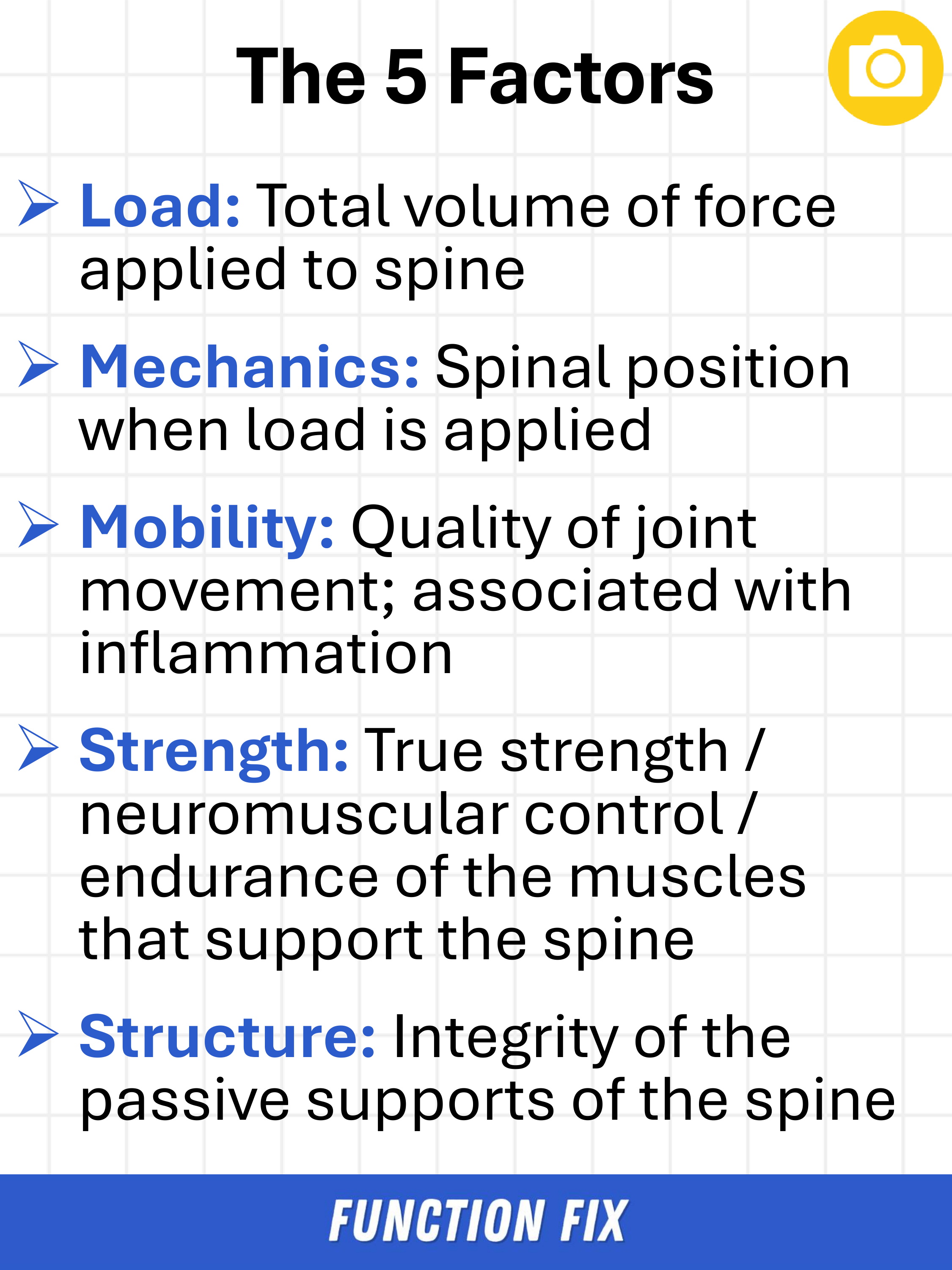

Slide 9
- Truly there is only one root cause of back pain, which is inappropriate loading - load, mechanics, mobility, strength, and structure are factors that contribute to this
- There is no universal example of inappropriate loading - it is person specific (although there are of course trends)
- Most people's pain is a certain % contribution of multiple factors (for example, 50% of their inappropriate spinal loading is from poor mechanics and another 50% is poor strength)
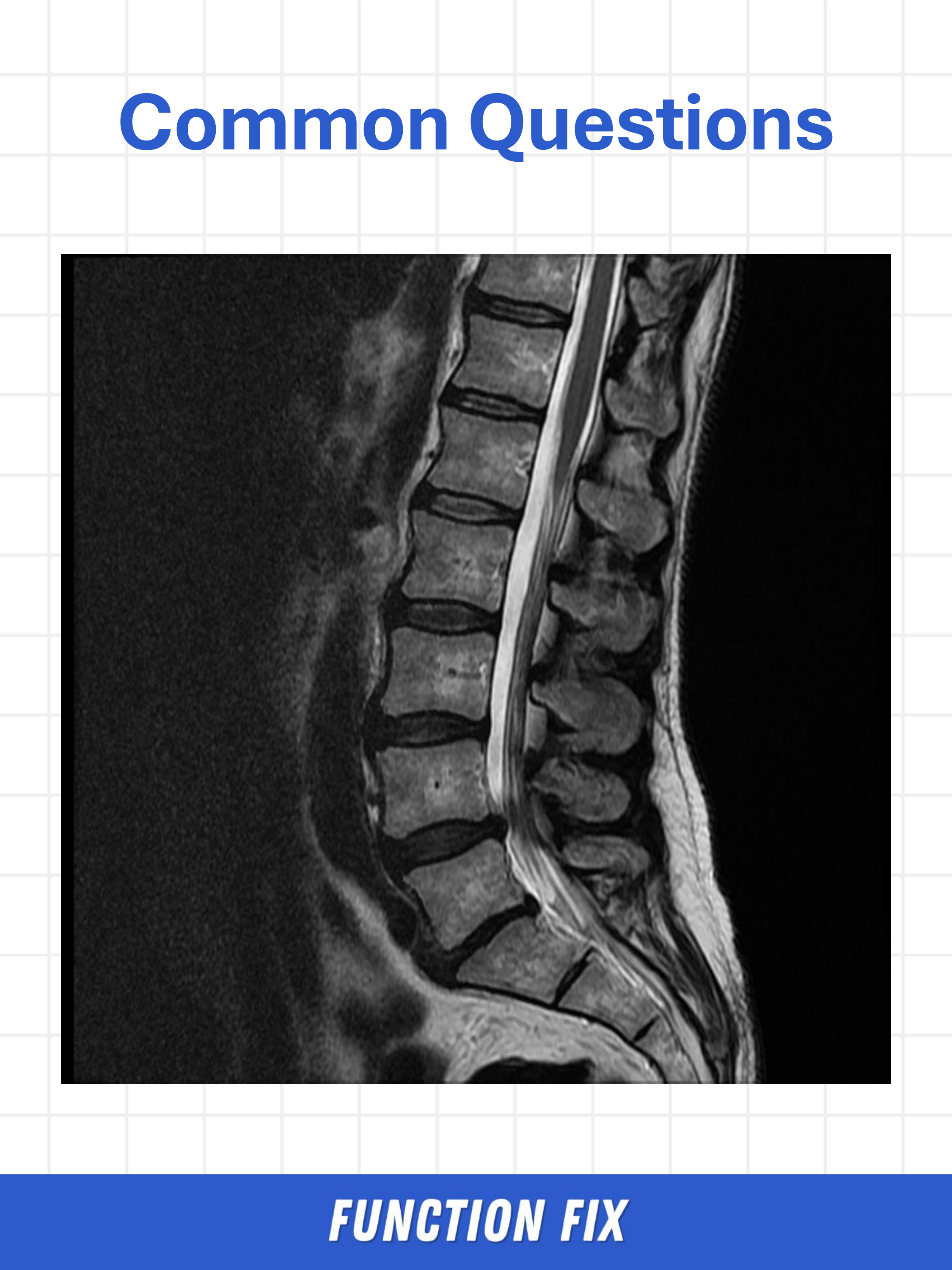
Slide 10
- If you have any abnormal finding on a X-Ray or MRI, I'd highly recommend watching this section of the video - there is a considerable amount of nuance here that is best explained verbally
- In cases like disc herniations where studies show some people's discs heal and others don't, my theory is that what causes the latter situation is when people don't fix the conditions (AKA the 5 factors) that led to the disc herniation in the first place - the herniation is the symptom, not the root cause issue
- In cases like arthritis (which never "heals"), it's important to consider that arthritic joints only produce pain when they're loaded in particular ways - if we optimize the 5 factors, we can often unload an arthritic joint enough for you to be able to do anything you want to do without pain
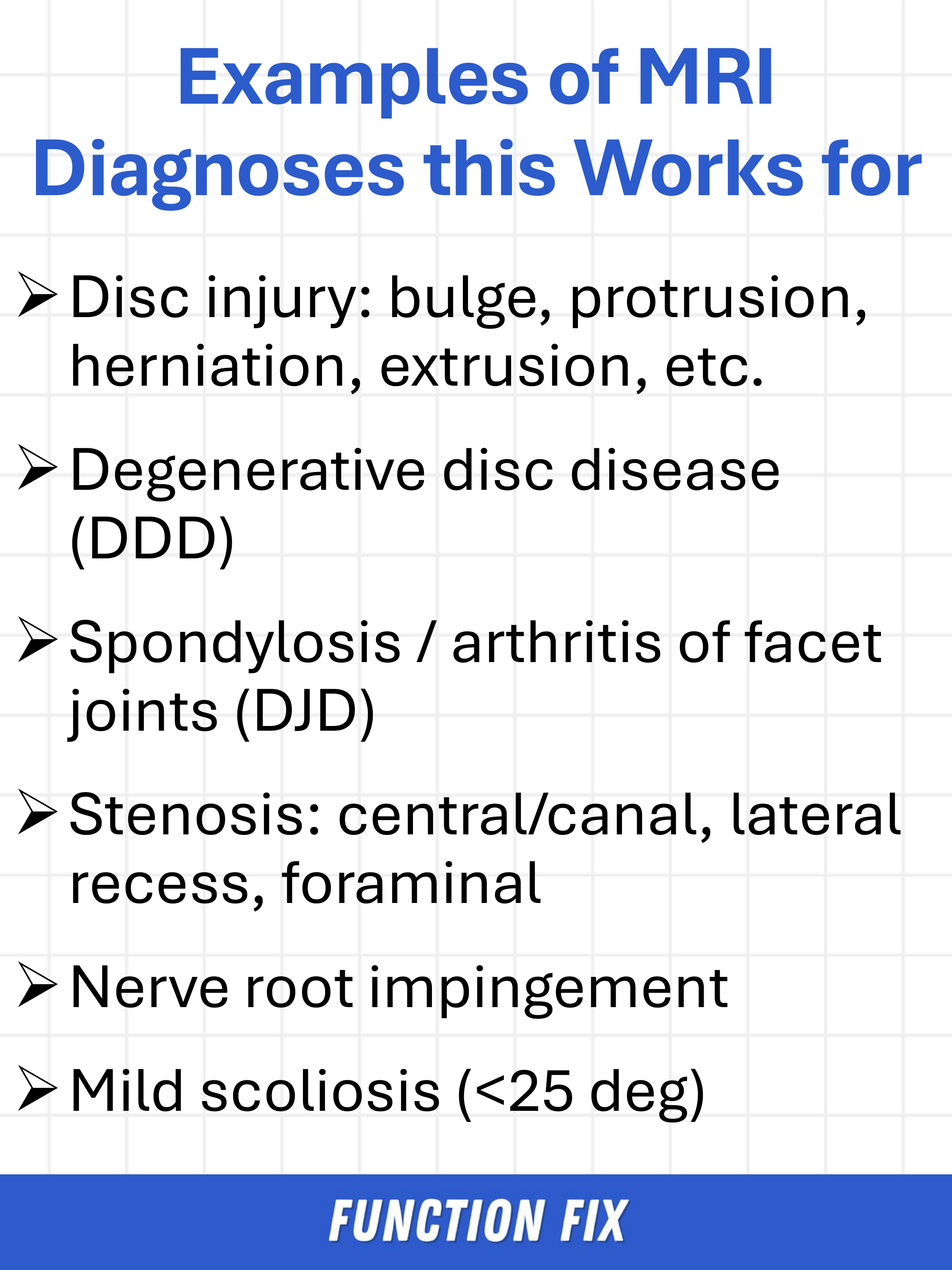
Slide 11
- List of MRI-confirmed "diagnoses" that my patients have had that all experienced a full recovery in pain/function with physical therapy
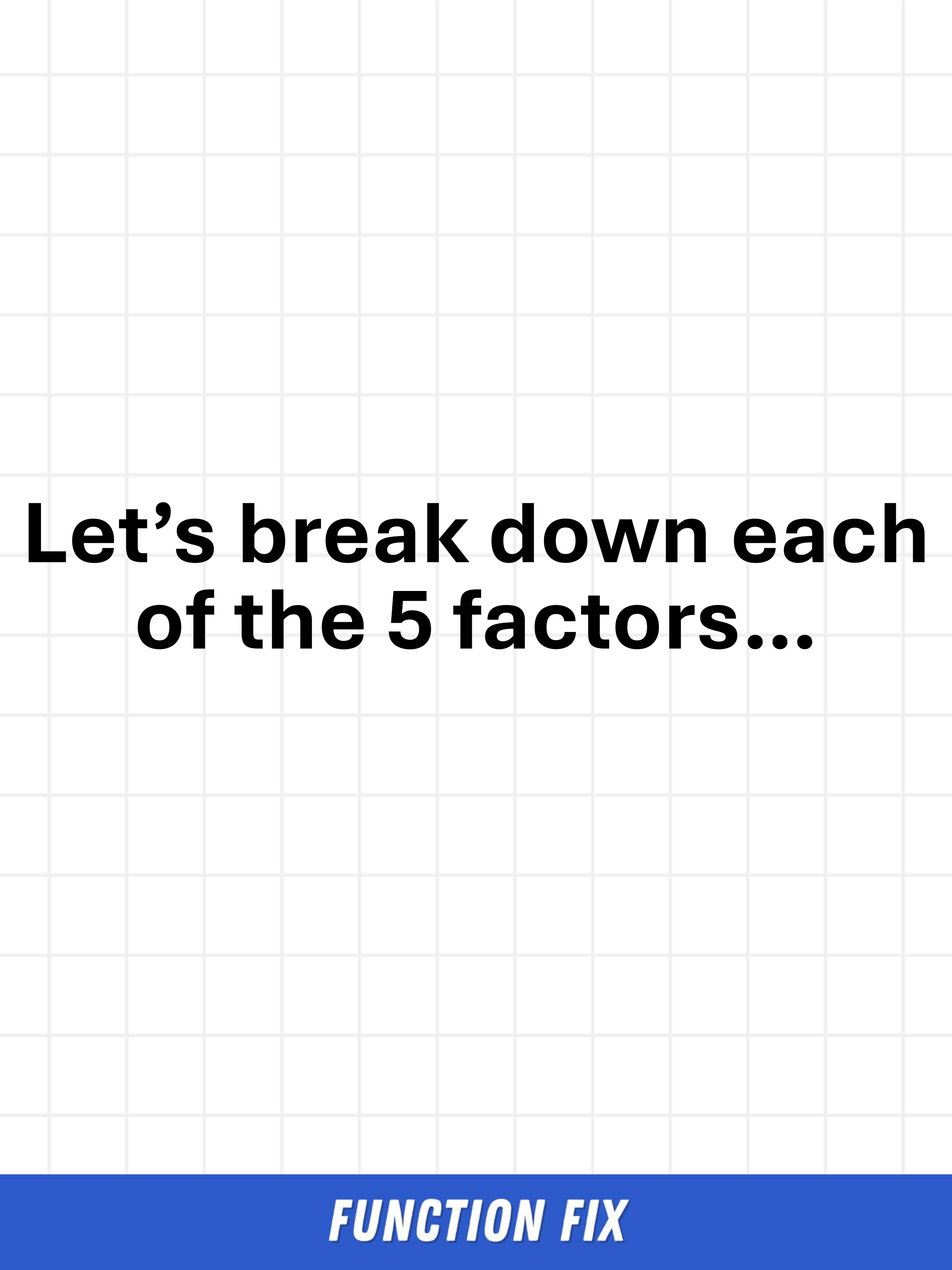
Slide 12
- We'll cover A) how each factor applies to inappropriate loading and B) examples of treatment for deficiencies in each of the 5 factors
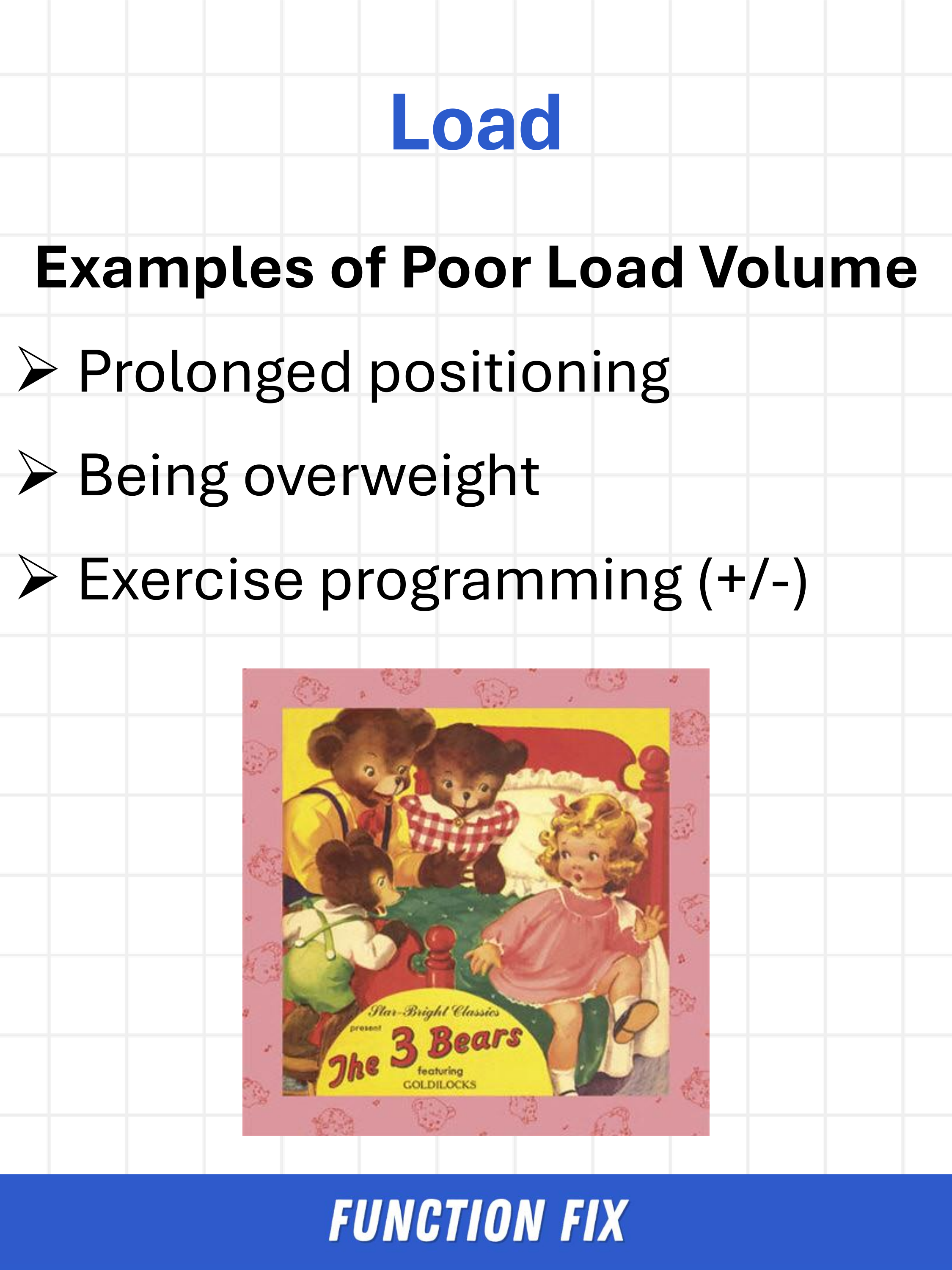
Slide 13
- Load = Total volume of force applied to the spine
- Prolonged positioning (in any position) will eventually cause pain, no matter how mobile or strong you are - for some this means 3 hours of sitting is their max before they need to move, for others it may be a 12 hour road trip
- Being overweight exacerbates deficiencies in all of the other 4 factors
- Both underdosing and overdosing exercise will cause back pain - most people shouldn't do heavy deadlifts every day, nor should they have complete bed rest (find the Goldilocks zone)
- "Treatment" here is self-explanatory

Slide 14
- Mechanics = Spinal position when load is applied
- There is both static positioning (ex: how you sit) and dynamic positioning (ex: how you run, deadlift, etc.)
- A common static mechanical fault I see is not sitting with a natural lordotic curvature in the low back
- A common dynamic mechanical fault I see is overstriding (which can produce pain throughout all the joints of the legs and spine)

Slide 15
- Treatment option 1: Education on proper form (sometimes you just need to watch a video of yourself to realize your form is off)
- Treatment option 2: In cases where you are educated on how to improve a mechanic yet you still can't do it, you then need to fix the imbalance either in the low back or somewhere else in the body that's causing the mechanical fault
- This second treatment option is where you can go down a rabbit hole of looking for imbalances in other areas of the body (ex: tight hips causing your back to round on a squat)
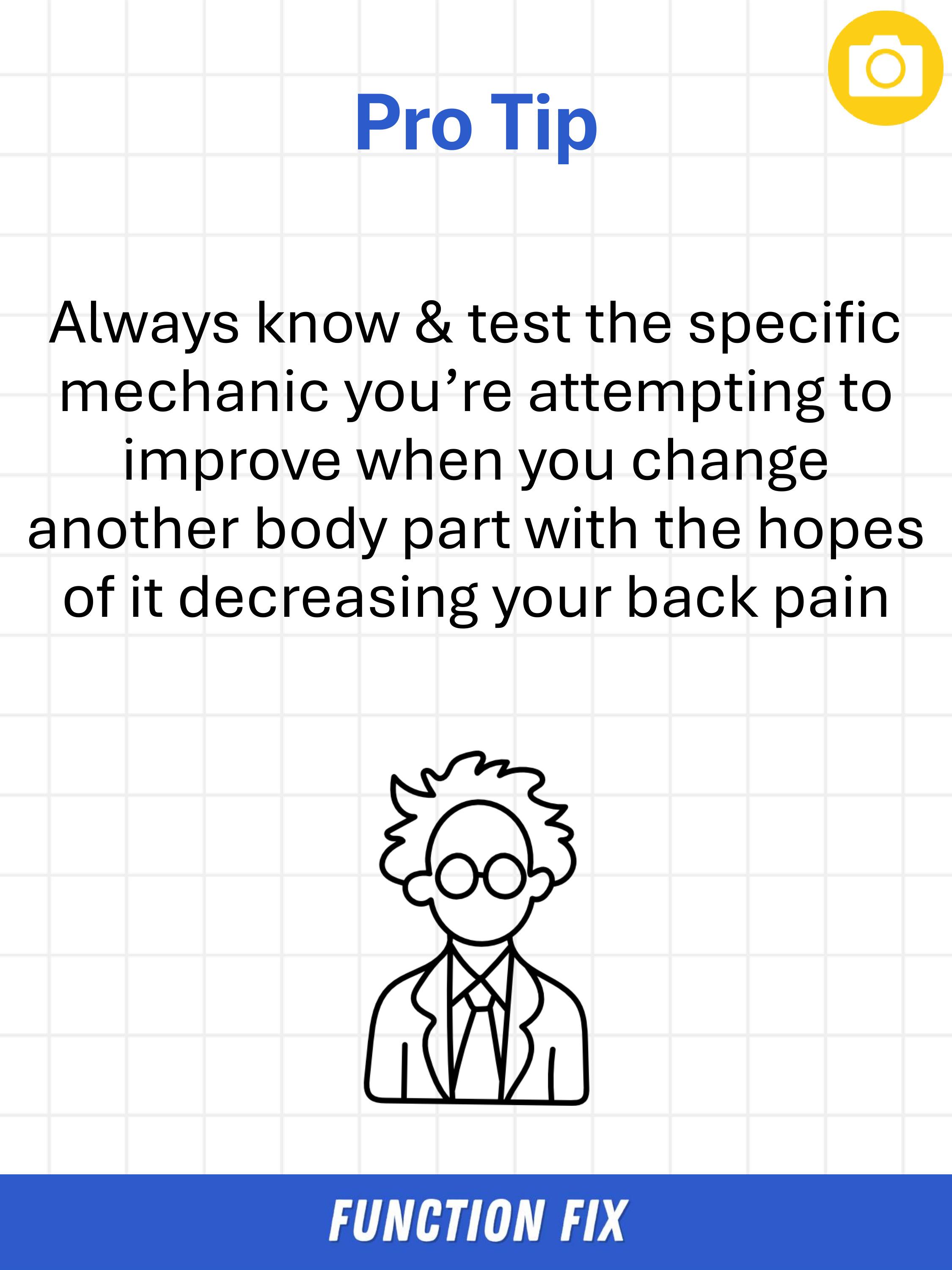
Slide 16
- If you go down the rabbit hole of assuming imbalances elsewhere in the body are causing your back pain, make sure you approach the diagnosis and treatment process in a scientific way
- Here's a 3-step process to do that:
- 1. Know the mechanic you are attempting to improve (ex: the way you bend)
- 2. Record yourself doing the mechanic before you attempt an intervention (ex: record yourself bending before you try hip stretches)
- 3. Record yourself again after you attempt an intervention (ex: either immediately or after 2-3 weeks of performing hip stretches, record yourself bending again to see if you're bending better)
- In the long run, this process will save you an immense amount of time and frustration
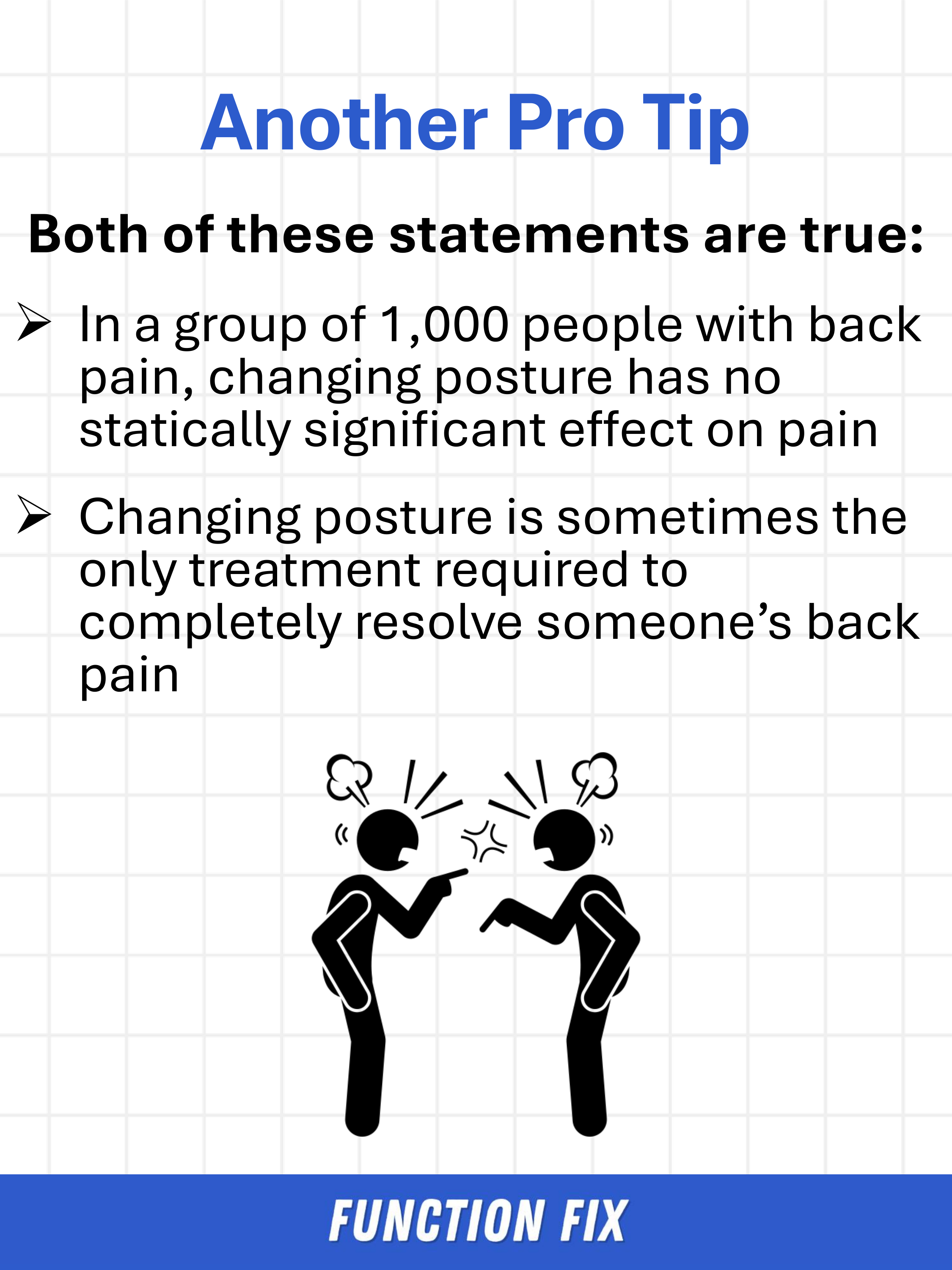
Slide 17
- Scientific studies are helpful, but they can sometimes over-generalize
- For example, if changing posture in a group of 1,000 people with back pain only improves the pain of 10 people, the study will conclude that, overall, changing posture doesn't work
- This ignores the fact that for those 10 people, changing their posture did indeed fully resolve their pain
- Remember it's not a question of does an intervention work or not, it's a question of if an intervention is relevant for a specific individual
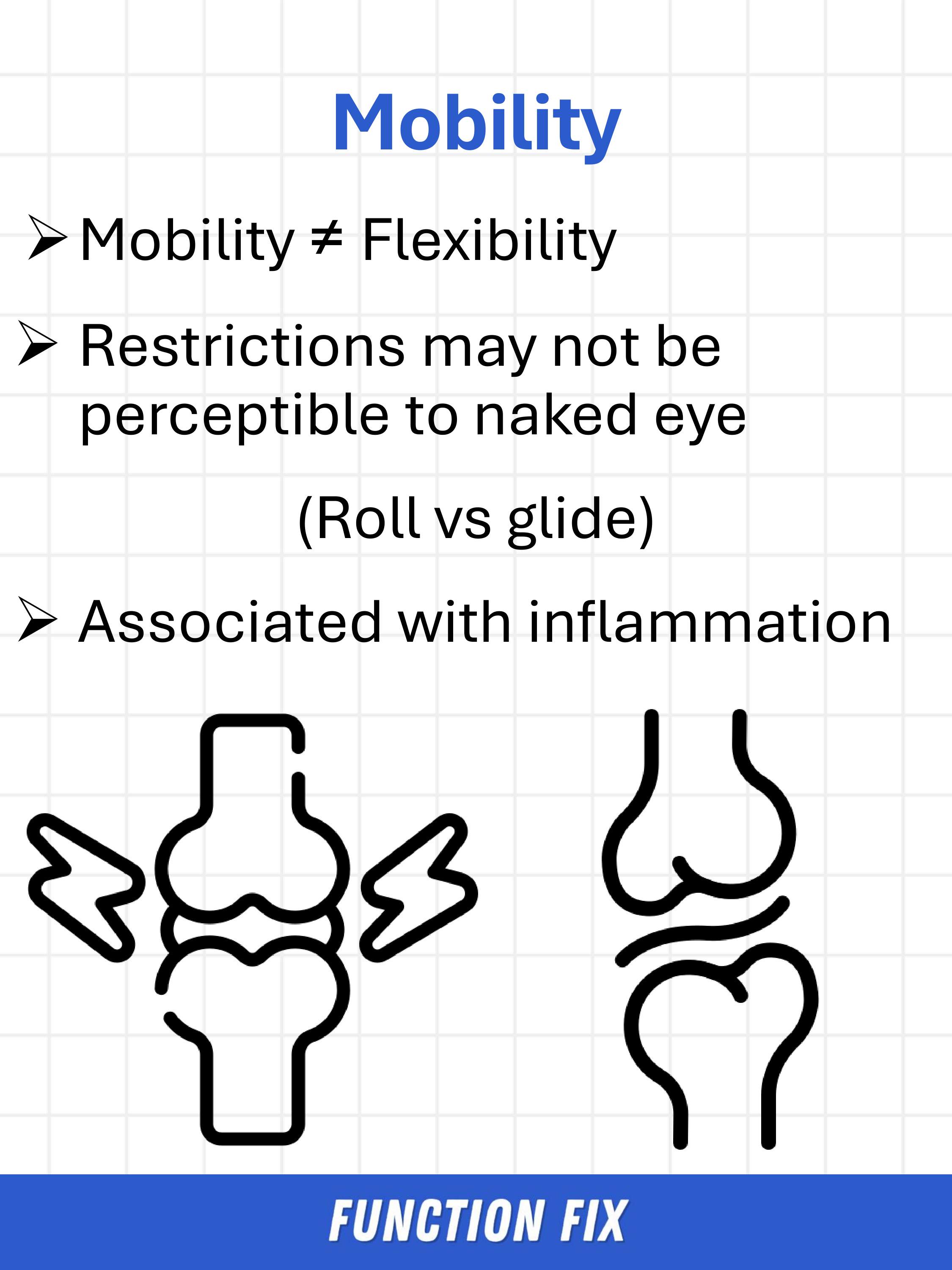
Slide 18
- Mobility = Quality of joint movement, which is associated with joint inflammation
- Mobility is how well joints move on one another, flexibility is how stretchy/long muscles are
- For most people mobility restrictions are related to poor internal movement quality, not gross movement capacity (reference the video for a physical demonstration)
- Inflammation in a joint leads to mobility deficits

Slide 19
- Treatments for mobility deficits involve moving a joint to its end-range position
- This can be done with someone else putting their hands on you, or it can be done by yourself (the upper left and upper right image are the same force on the spine, as is the bottom left and bottom right)
- The McKenzie method of physical therapy is heavily focused on fixing mobility deficits


Slide 21
- Strength = The true strength, endurance, and neuromuscular control of the muscles that support the spine
- The 3 muscle groups listed are the main muscles that support the lumbar spine
- True strength of a muscle is the total amount of force a muscle can produce, endurance is how long a muscle can produce a force, and neuromuscular control is essentially the quality of mind-muscle connection
- The McGill method is heavily focused on fixing strength deficits, with a particular emphasis on neuromuscular control

Slide 22
- For hybrid athletes, physical therapy strength exercises need to be progressed past the point of low-level neuromuscular control training if you want to develop a truly robust spine
- Heavy erector spinae isometrics as shown here are an example of a higher-level strength exercise that I've seen good results with
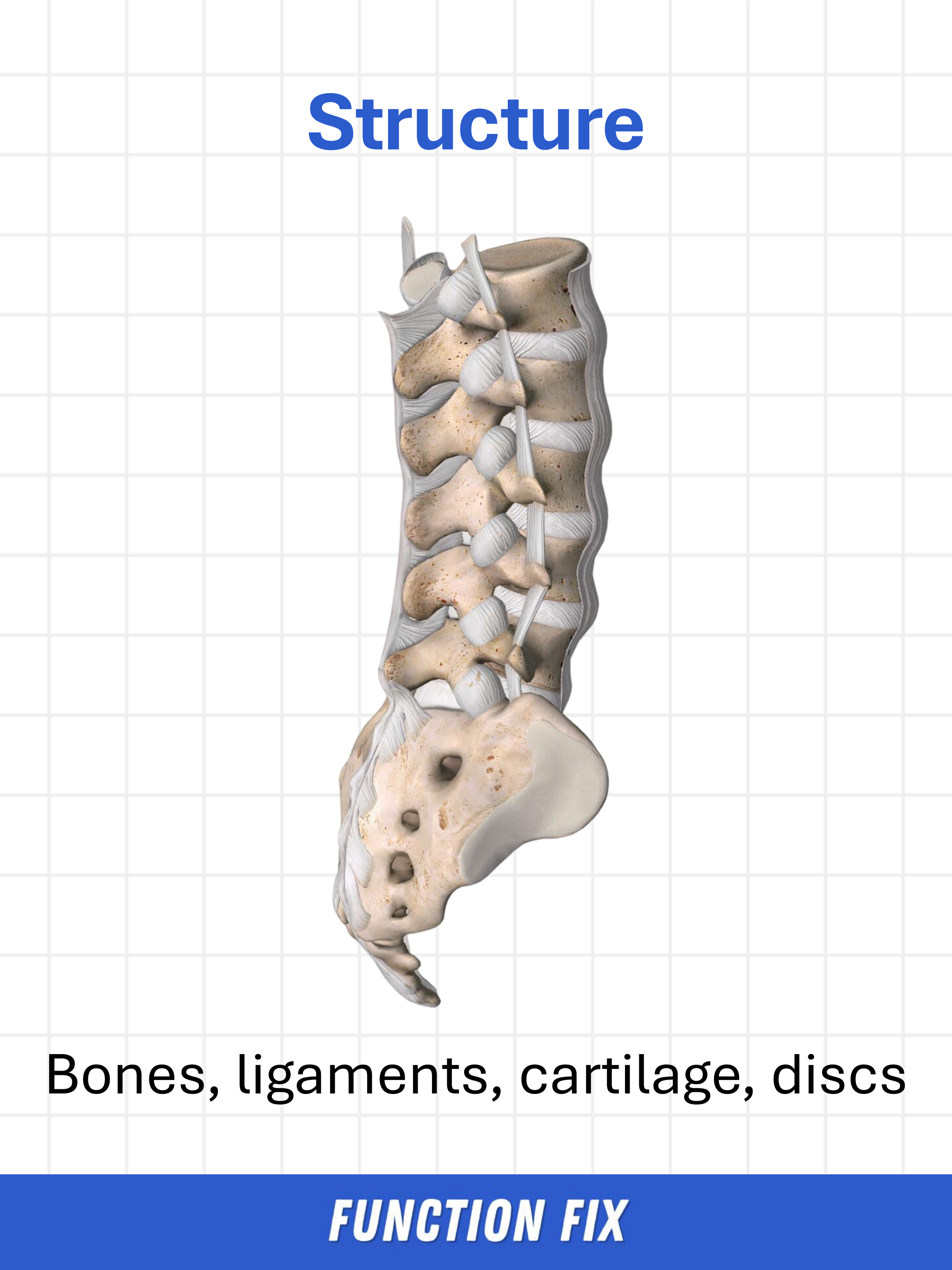
Slide 23
- Structure = The integrity of the passive supports of the spine
- The bottom of the slide lists the relevant passive support structures
- For this section I am not talking about the structures causing pain themselves - instead, I am talking about how well these structures are able to accommodate load, and how that contributes to the overall "inappropriate loading" equation
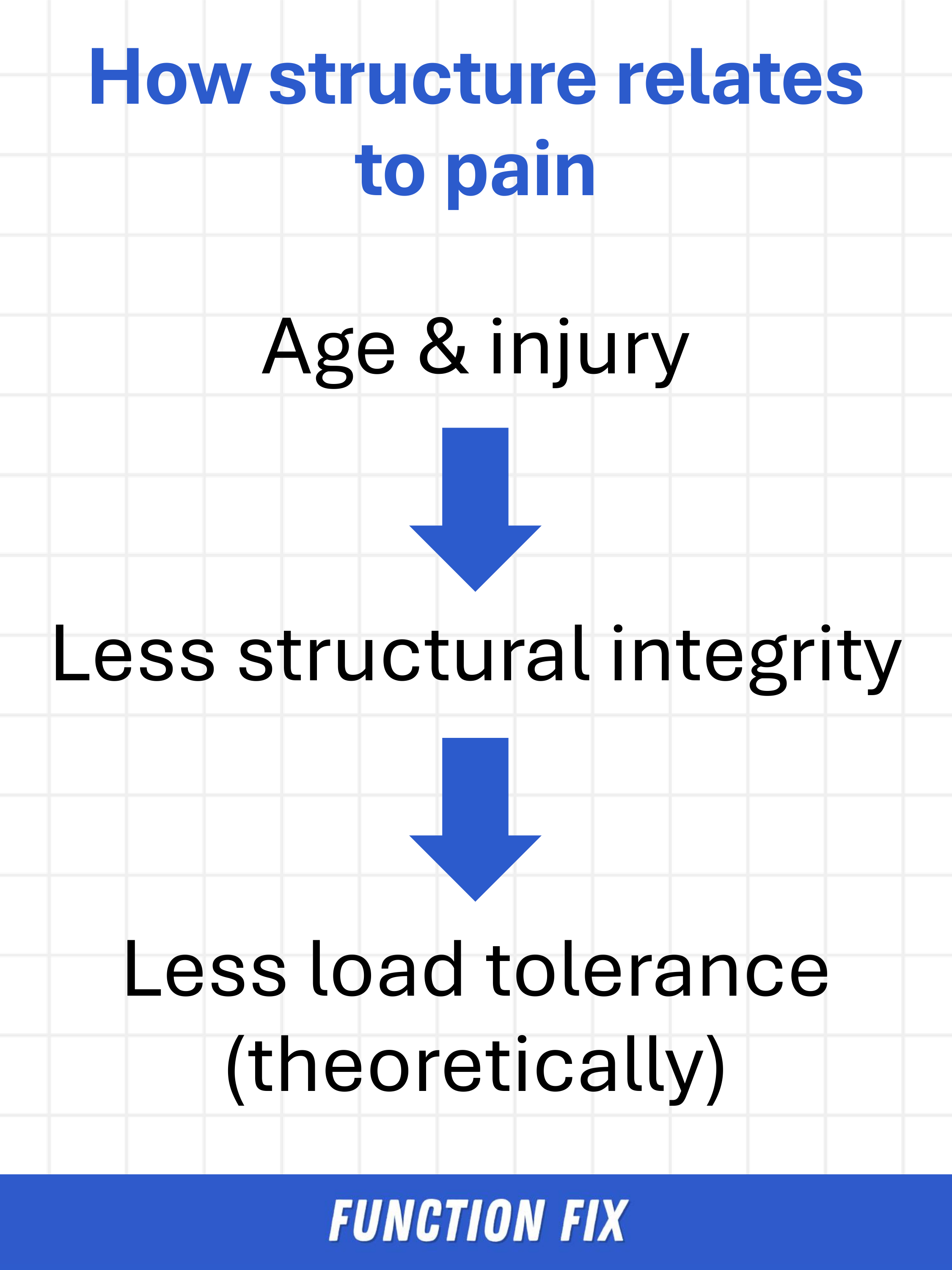
Slide 24
- This is an example of what I mean by structure relating to the overall "inappropriate loading" equation
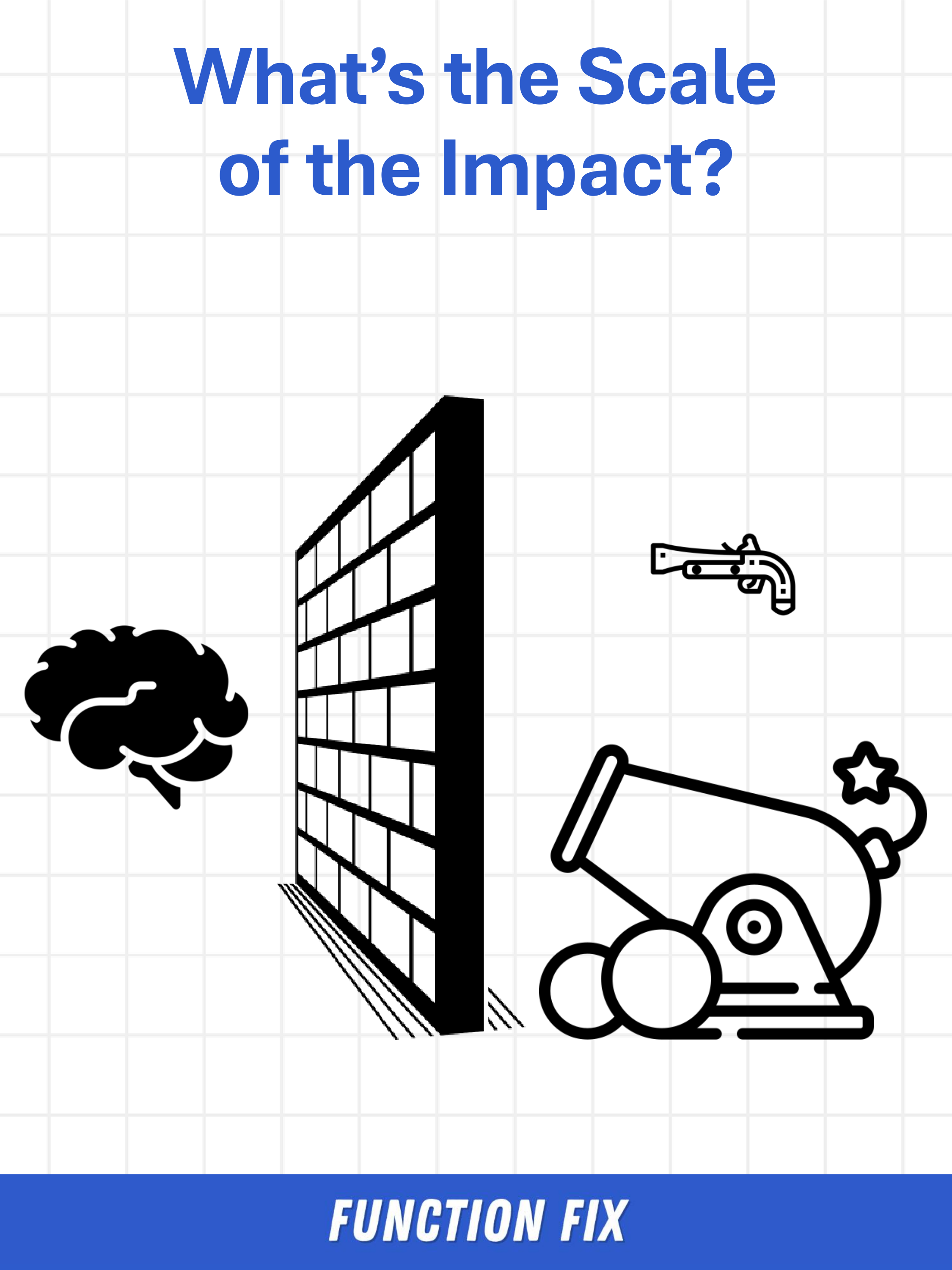
Slide 25
- Here's an analogy I like to share: Imagine there's a king inside a castle with people outside the castle shooting the castle wall - the king is your brain, the castle walls are the spine's passive supports, and the shooting is inappropriate load being applied to the spine
- No matter what's shooting the wall (a musket or a cannon), the king is going to be mad - similarly, no matter how damaging the inappropriate load is on your spine, your brain will likely produce a pain signal
- What truly matters, is how much damage was done to the wall... is there only some chipped bricks from a musket shot, or is there now a gaping hole from a cannon?
- My opinion is that most inappropriate loading only causes musket-level damage to the spinal system as a whole - I say this because we have ample amounts of evidence that shows the MAJORITY of people that don't have back pain or functional limitations have "damage" in their spines such as arthritis, herniations, etc.
- Small amounts of damage will not significantly alter your overall load tolerance, just like a castle wall getting shot by a musket won't significantly impact the wall's integrity - there is so much redundancy in the spinal system that the body can handle a fair amount of damage before being "structurally compromised"
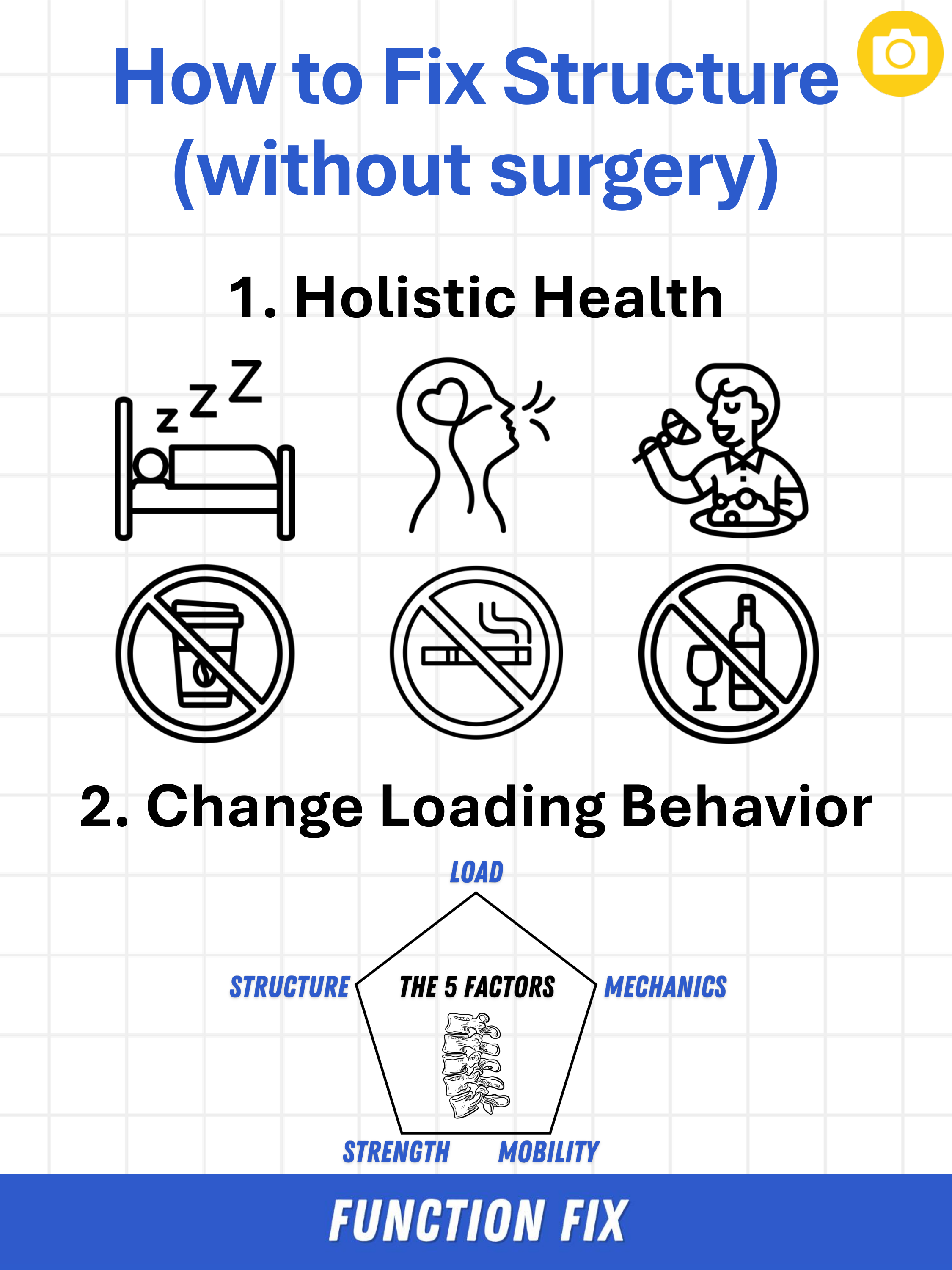
Slide 26
- There are two main ways you can help your body fix damage to passive structures:
- 1) Holistic health: Getting an appropriate amount of high-quality sleep, practicing stress reduction techniques such as deep breathing, eating well, not consuming caffeine in the second half of the day (to improve sleep quality), and limiting nicotine and alcohol
- The above may seem like mundane medical advice, but I've had 3 patients in the past year where nothing we did in PT helped and it wasn't until we optimized these basic healthy behaviors that they finally got better
- 2) Change loading behavior: If you pulled your finger back as hard as you could until you sprained the joint and afterwards you kept pulling back on your finger, you wouldn't expect the joint to heal - similarly, if you don't change the 5 factors that lead to your back injury, it is unlikely that your back will fully recover


Slide 28
- A saying I like to use is "tissues heal, but the nervous system remembers" - once you've had severe pain or pain that's lasted for a long period of time, your brain will continue to be sensitized to all signals coming from that body part
- What this means is a force that would normally be felt as light pressure (for example, the pressure felt in your spine when walking) gets interpreted by your brain as pain
- Sometimes even if we correct everything within the 5 factors, we can still have low levels of pain left over for weeks to years due to central sensitization (although, most often, this pain is more of a general soreness and doesn't limit you in any functional way)
- There are 2 ways to fix this: First is simply being reassured that your spine is healthy (similar to a placebo effect) and second is undergoing a gradual ramp up of exercise intensity (a sharp increase in activity will shock the nervous system and keep the brain in an "alarmed" state)

Slide 29
- In my experience, muscle tightness & spasms are the result of inappropriate loading, but not the cause
- When the low back joints are inappropriately loaded, the body tenses up the muscles in the area in an attempt to protect the spine
- This prolonged muscular tension can cause additional pain on top of the underlying painful condition already present
- In most cases, if we address the root cause issue (the 5 factors) this muscle tightness will go away by itself
- Sometimes though, a person's back can be so locked up that we need to use the interventions listed to allow them to relax first (although this is rare - I've only seen it twice)
- Because prolonged muscular tension can be painful, and because muscular tension is so common with joint irritation, almost all people will temporarily feel better by performing these interventions - the key is that very few people will truly FIX their pain long-term with these interventions alone
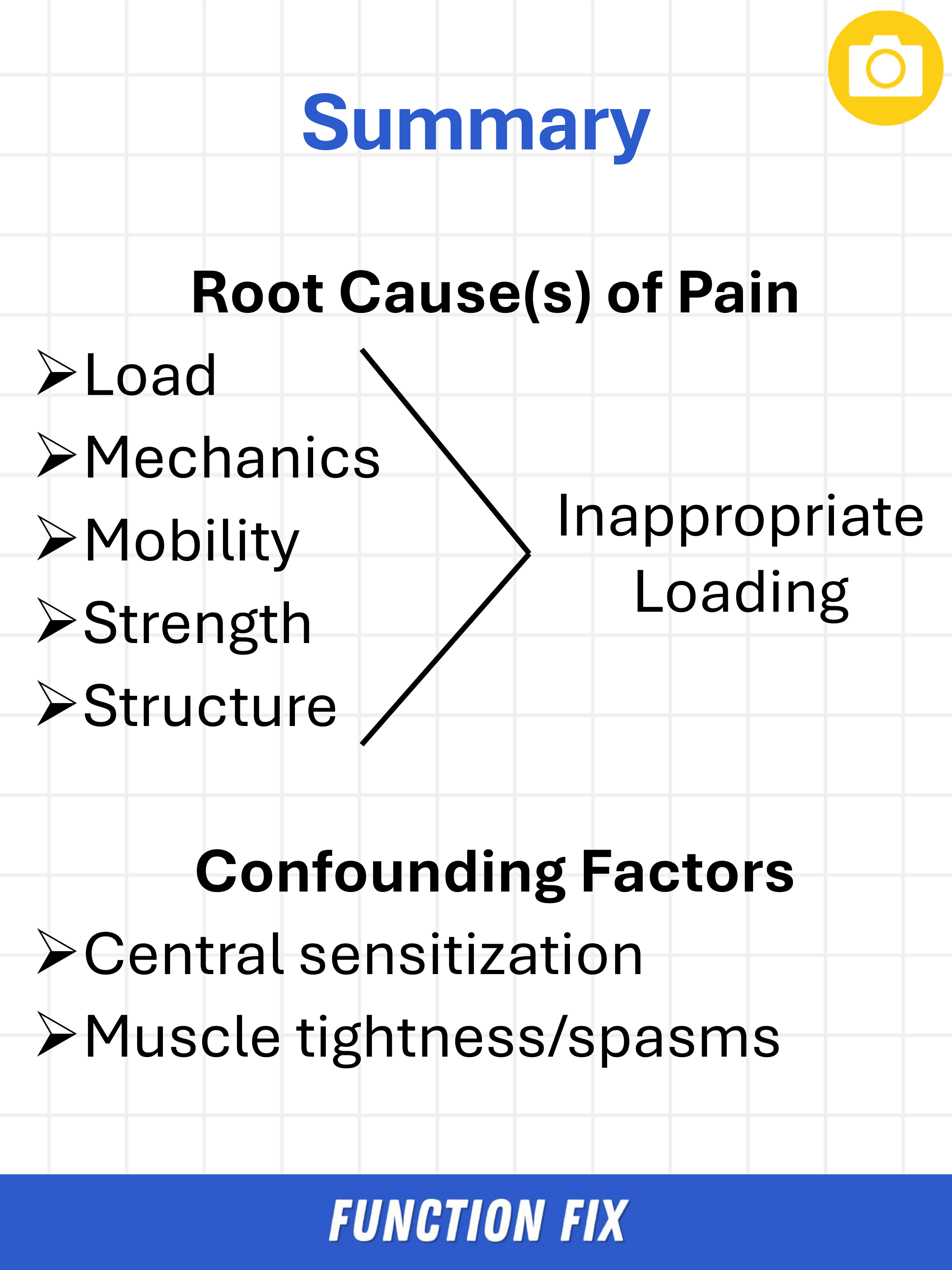
Slide 30
- In summary, when I'm evaluating a patient with back pain I'm thinking through which of these 5 factors are most likely to be causing their spine to be inappropriately loaded (and therefore, what's causing their pain), while keeping in mind the 2 confounding factors that may effect the patient's presentation
- Treatment for load & structure largely revolves around conversation/education
- Treatment for mechanics, mobility, and strength are where we perform more of the classic "PT exercises"
Get Notified About Future Resources Like This
DM me the word "info" on Instagram and I'll DM you all the resources I make like this in the future.
My goal is to produce 1 in-depth resource per month.
Bonus Section
Here's the #1 specific issue I see within each of the 5 factors along with how you can fix it.
Note: I will be creating YouTube videos explaining each of these issues/fixes in-depth soon. If you'd like to be notified of these videos, check out the box above about getting notifications.
Load
- Issue: People tend to under-load their spines after an injury, which results in atrophy of the muscles that support the spine and the development of joint immobility.
- Fix: It's okay to rest from most activities for the first few days after an injury, but within 3-5 days I recommend returning to as much lower body loading as you can tolerate that does not cause lingering pain (pain experienced later that day or into the next 1-3 days). Discomfort in the moment while doing an exercise is okay.
Mechanics
- Issue: Instead of using their hamstrings/glutes, people with recurrent low back pain tend to use their back muscles (erector spinae) to return to upright after bending. With time, this puts excessive load on the spine (especially if your erector spinae are weak).
- Fix: You can spend a lot of time optimizing bending form (Google "dowel rod hip hinge" for some more info on this), but a simple way to improve bending form is simply to use the cue of "squeeze your butt muscles" to make yourself return to upright. Note: this is for every time you bend over throughout your day, not just during heavy lifting.
Mobility
- Issue: Most people's spinal joints are stiff/restricted. This is because A) joint mobilizations are not taught in the general fitness world and B) after an injury many people avoid the joint compression exercises that fix immobility because these exercises tend to be uncomfortable.
- Fix: Use the test-retest method to determine what mobility exercises work best for you. The #1 most effective mobility exercise in my clinical experience is the prone press-up (note: there are many variations of the press-up to modify the force on the spine).
Strength
- Issue: Many people do not properly strength-train the 3 primary muscle groups that support the spine throughout their weekly training regimen. Of the 3 muscle groups, the erector spinae tends to be the most neglected.
- Fix: Strength train the erector spinae, internal abdominals, and glutes for at least 8 sets a week each, ideally split into 2 workouts of 4 sets. Each set should be to near failure. Here's a progression on erector spinae training.
Structure
- Issue: Holistic health tends to not be prioritized enough when rehabbing/healing after an injury.
- Fix: Optimize each of the 6 major components of holistic health that impact recovery. Of the 6 major components, the most deficient component I see that has the largest impact on recovery is sleep. A simple way to optimize sleep is to aim to wake up naturally the majority of days a week. In an ideal world alarm clocks are a backstop, not the standard way you wake up (much easier said than done, I know).
